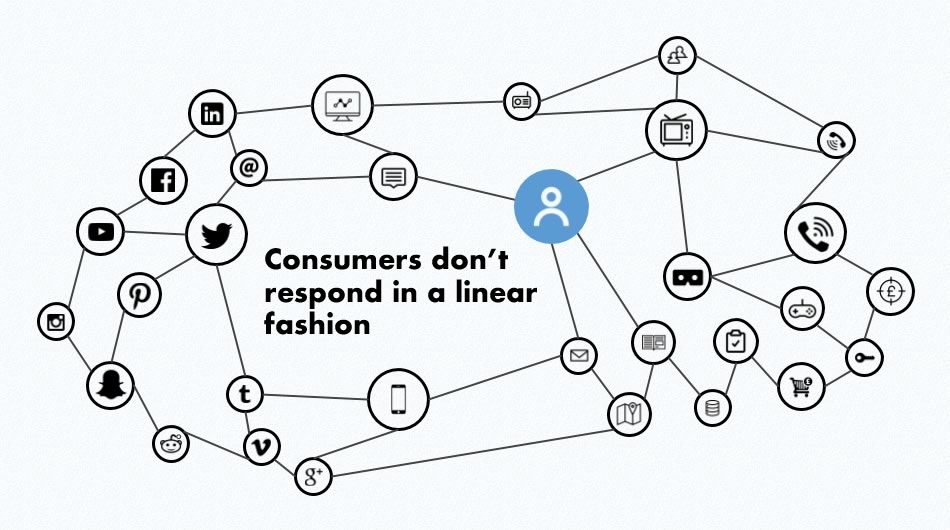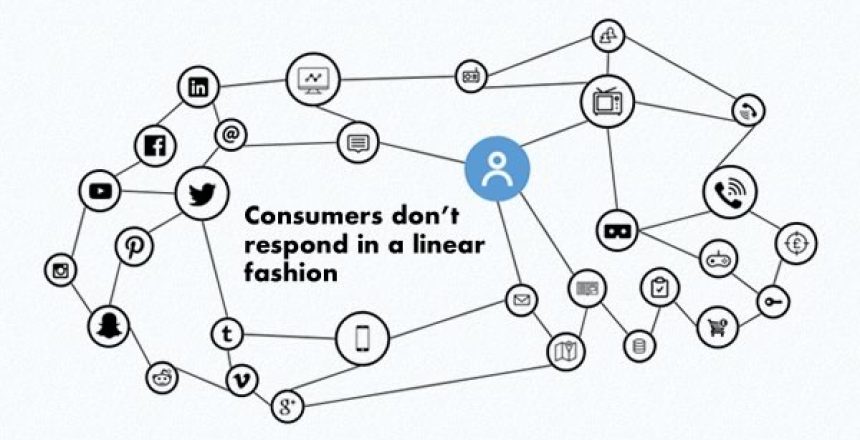Content marketing is hardly a new concept and dates to the early days of the printing press. Brands used to communicate their messages predominantly through TV broadcasting and printed ads.

However, since the explosion of social media, the landscape of communications and advertising has altered quite dramatically to one where customers can demand and gain information in any time frame and format they wish. Having access to a myriad of channels means it is essential to provide valuable and relevant content across all channels, to keep these consumers informed, engaged and educated about products and services, propelling them ultimately towards purchase. To achieve that, it is therefore essential to tailor content to the consumer’s information needs at each stage in the customer journey.
Awareness
At the awareness stage of the customer journey, paid search (or PPC, pay-per-click) is often used to make consumers aware of the brand and its products or services. Through recent visits and searches, the algorithms behind search engines and social media channels will gather information about the consumer. For example, when someone spends a lot of time searching for make-up products on Google, there will be an increased chance of Superdrug ads being served up. These ads will raise awareness about the Superdrug brand and its products to a targeted audience, and will redirect the consumer to the website.
Research & consideration
After the awareness stage, the consumer will further research the products, consulting a total of 10.4 sources on average, before purchasing a product or service. The brand’s social media channels will often be visited in the consideration stage, where a brand usually aims to create an active dialogue with their consumers around their products or services. Naturally, content provided on channels like Facebook and Twitter will be short in length and won’t be able to drive sales and conversions solely. Unlike social media though, magazines are the perfect medium to hold attention and have the capacity to foster a long lasting relationship. Holland & Barrett, for example, developed content for both female and male customers under the titles of ‘Healthy’ and ‘Healthy for Men’, and delivered this content via a multi-channel content strategy, including direct mail and print magazines. Distributing content through the latter turned out to be a great success, with 65% of readers making a purchase after reading the print magazines.
A typical B2B method of capturing a customer’s interest includes White Papers, which are often distributed online in exchange for email addresses and other personal information. By capturing their data, companies can provide more personalized content. This can manifest itself in the form of digital newsletters or more personalized emails.
Decision & post-purchase
When all the stages have been passed, the consumer will go ahead with the purchase. It is essential to highlight the importance of the after-sales stages, as this is the key moment in which to form long-lasting relationships with consumers. To turn one-time buyers into loyal customers, content should be designed to make them engage more often so that they extend both purchase frequency and value.
Holland & Barrett succeeded in driving average transaction values and lifetime transaction values by providing new and existing content. More specifically, they provided updates on product changes, gave tips on social media, sent emails and asked for customer feedback. By doing this, it demonstrates that the company cares about the consumer and their experiences and enables the brand to build trust. Customers are clearly more likely to make repeat purchases and become loyal customers when they have had good user experience.
The content provided across all available channels plays a huge role in the success of a brand. By tailoring content to the consumer’s information needs, a brand can enhance visibility, awareness, customer engagement and so boost customer loyalty. Understanding that relevance is key, brands will be able to reach and influence consumers with the right content at the right time and through the right channels.
This article was written by our intern Rehana Al-Soltane.



